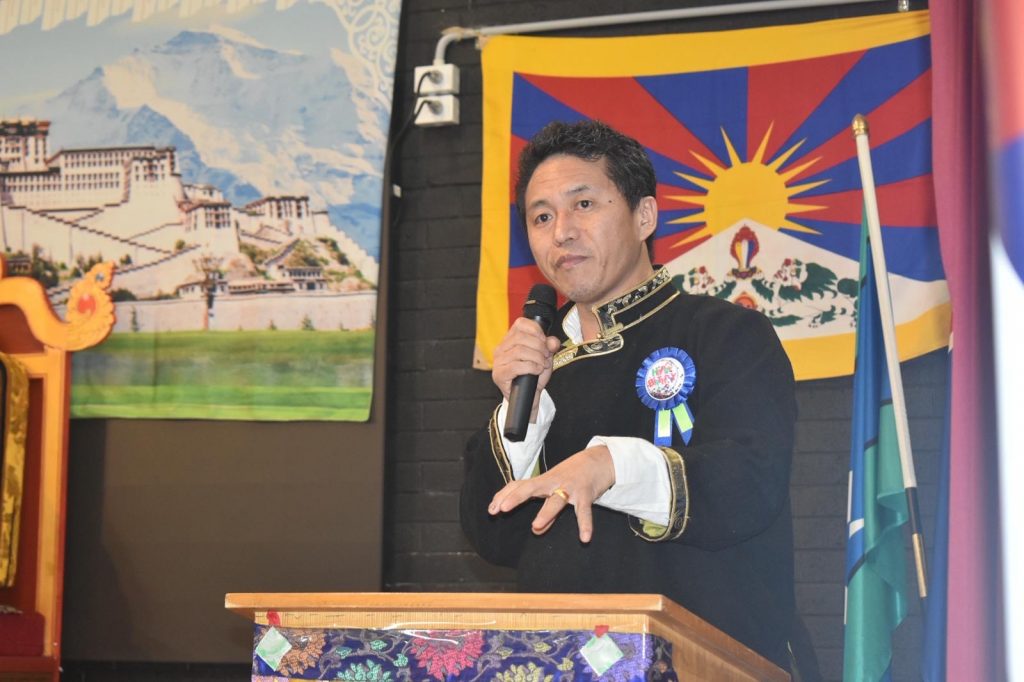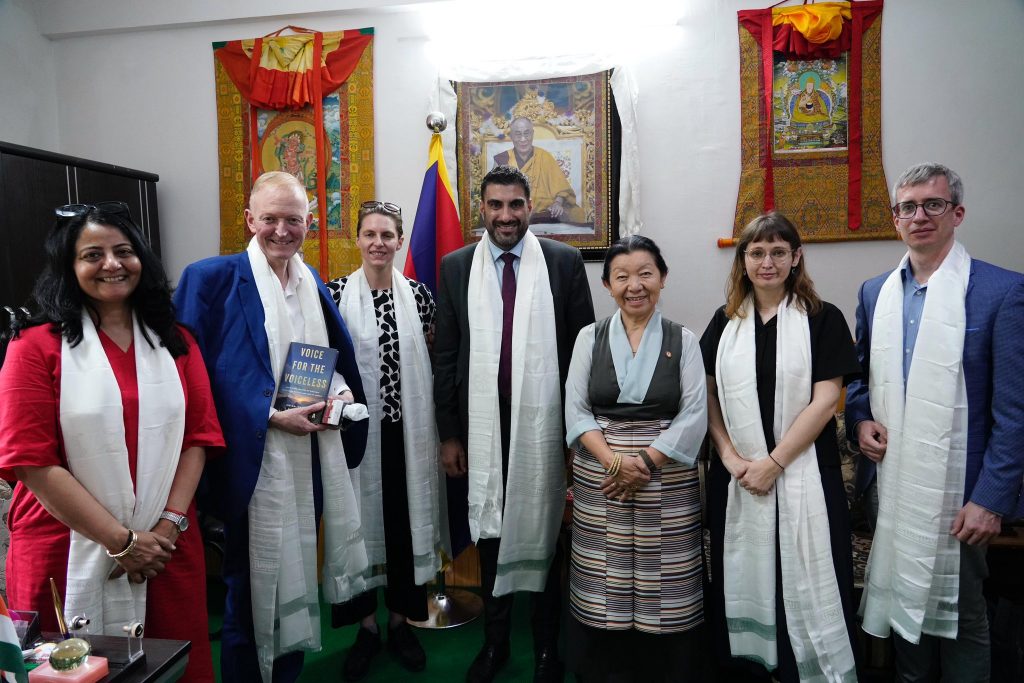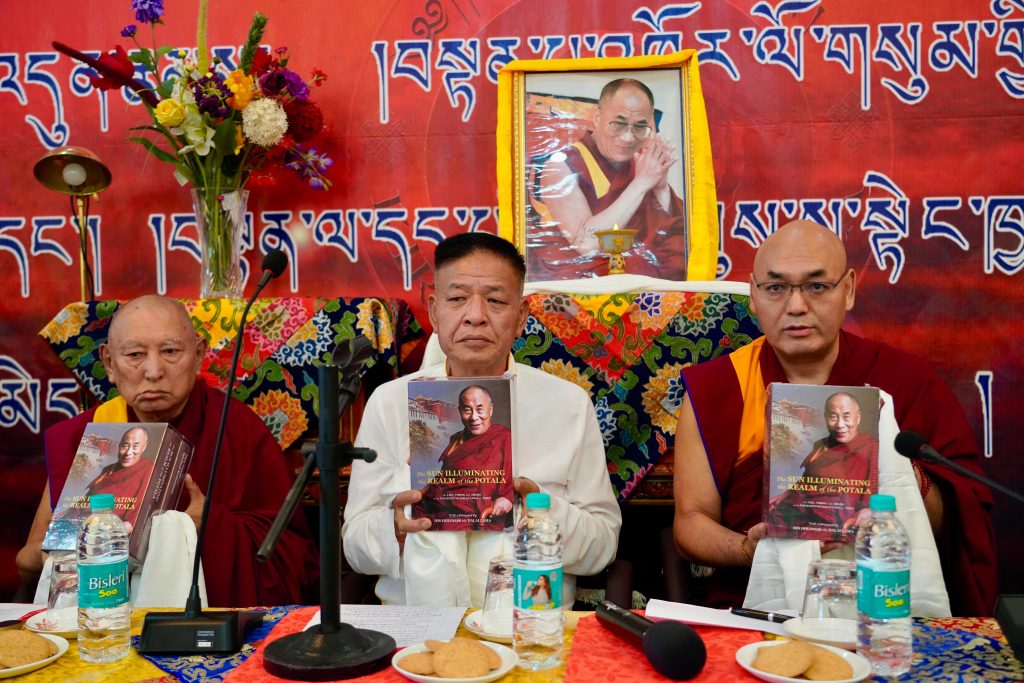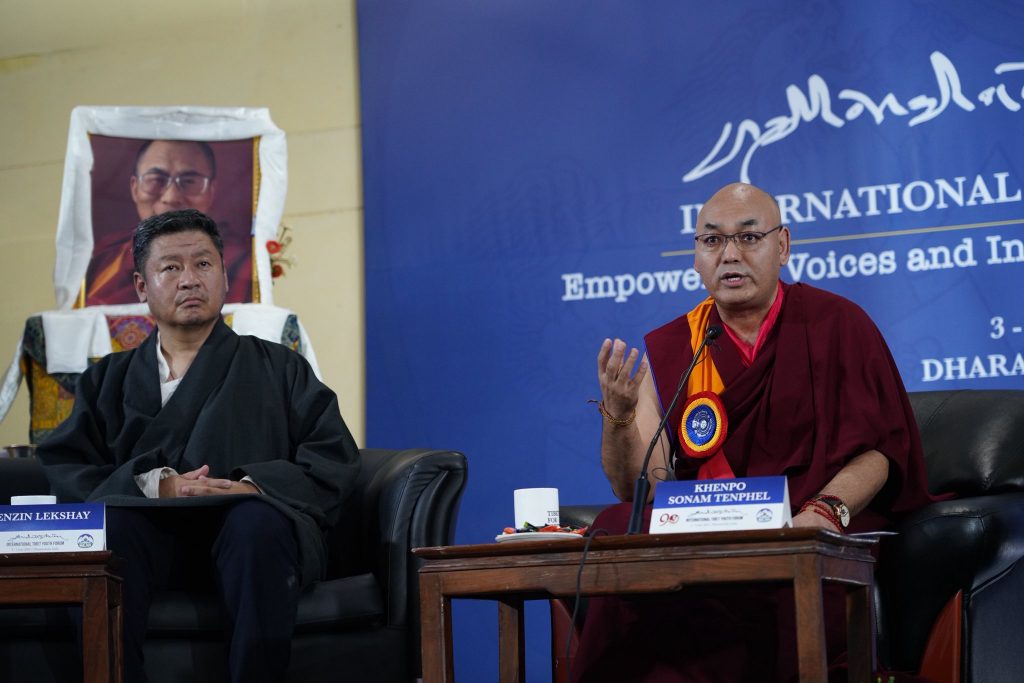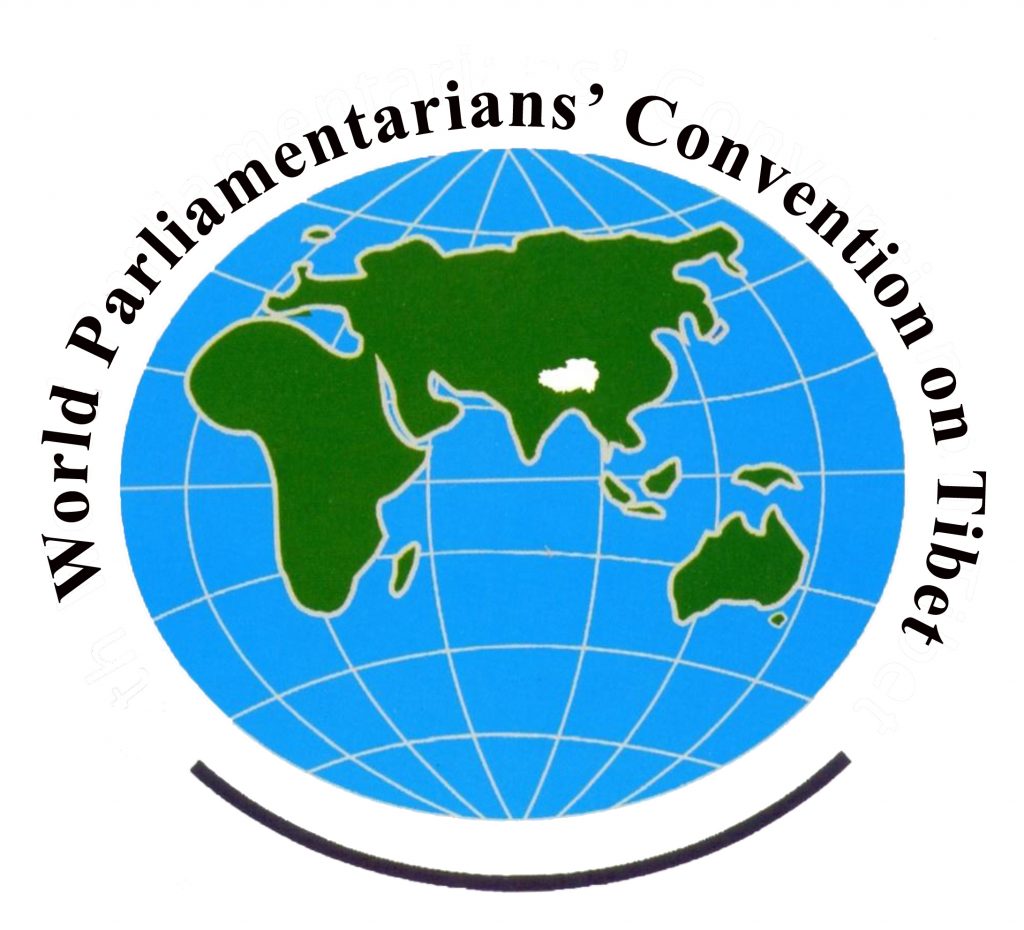DOCUMENT No. 19
Official Resolution of anguish and solidarity on the critical situation in Tibet*
Preamble
It is an undeniable fact from any point of view that Tibet since the reign of its ancient king Nyatri Tsenpo until the armed invasion by the communist government of China has been a free and independent country. When the armed enemy invasion of the communist Chinese government came, people across the entire length and breadth of Tibet launched a succession of resistance campaigns. But due to the sheer difference in the strength of the armies on the two sides, it was beyond the means of the Tibetan people to stop the invasion. And so, in 1959, Tibet lost its capital Lhasa, the development of which compelled Tibet’s spiritual leader and temporal head, His Holiness the Dalai Lama, along with many tens of thousands of Tibetan people, to escape into exile.
Since the start of the invasion, the communist government of China destroyed or demolished more than six thousand temples and monasteries. More than a million Tibetan people were put to death. Most of the monks and nuns committed to their religious vows, study and practice were forced to become laymen and laywomen. Entire troves of Tibet’s rich and precious treasures were transported to China. Countless artefacts and relics of Tibet were set on fire. The outer territorial vessel and the inner contents of human and natural riches of Tibet were both subjected to enormous destruction in the name of variety of campaigns such as the so-called “peaceful liberation” and “Destroy the Old, Establish the New”. In particular, in the name of and under the pretext of the so-called “Democratic Reform” campaign, “Quelling the Disturbance” campaign, the “Cultural Revolution” campaign and so forth, large numbers of Tibetans were falsely charged with having committed various types of criminal offences and subjected to torture. The unbearable agony of such torments drove many Tibetans to commit suicide. As a result, in many parts of Tibet, whole generations of Tibetans and their surviving descendants were wiped out and rendered extinct. All these were tragic results of the implementation of the hardline, utterly merciless policies of the communist government of China.
Under its colonial policy of transferring its own people to Tibet in massive influxes, the communist government of China has constantly been moving to make the Tibetan people a minority in their own homeland. And under a campaign called “Support the Poor, Smash the Stubborn”, China is currently implementing in Tibet a policy of demolishing traditional Tibetan architectural buildings and destroying Tibetan costumes, as well as Tibetan customs and traditions under a sinister policy of Sinicizing them completely. Under its urbanization policy in Tibet, the communist government of China is driving Tibetan farmers and nomads out of their thriving traditional means of livelihood in its constant efforts to destroy their Tibetan identity. To the Tibetan farmers and nomads already resettled by the Chinese government in urban clusters under its coercive policy, the hardships of livelihood, healthcare, and so forth continue to be limitless.
Likewise, under yet another policy it is implementing in Tibet presently, the communist government of China is actively seeking to Sinicize the Tibetan Buddhism. For this purpose, it has set limits on the enrolment of the numbers of monks and nuns at monasteries and nunneries. It has expelled Tibetan Buddhist monks and nuns from their monasteries and nunneries. It has laid down directives for the recognition of reincarnations of lamas and tulkus of Tibetan Buddhism. It actively interferes in the customary and traditional religious rituals and practices of the Tibetan people. And by means of carrying out an education campaign called “Being Patriotic as Well as Loving Religion”, the government of China is coercing the Tibetan people to denounce His Holiness the Dalai Lama against their wish not to commit any such profanity. And in the name of maintaining the peace and harmony in the nation, China puts all sorts of politically motivated criminal labels on the Tibetan people as pretexts to imprison them.
China has introduced in Tibet what it calls a bilingual education system. Under it, the teaching of spoken and written Tibetan language has been replaced with the spoken and written Chinese language from the primary school level onwards. Many Tibetan children are especially taken to China where in the name of giving them improved education they are only taught written and spoken Chinese language. No arrangement is made to teach them their own ethnic language as any such curriculum is specifically barred. Various provisions of the Law of the People’s Republic of China on Regional National Autonomy were revised with a view to kill the language of the ethnic minority groups. For example, Article 37of this law was revised to provide, among other thing: “At the senior primary school or the middle school level, Mandarin and Chinese literature courses should be taught to popularise the common language used throughout the country and the use of Mandarin characters so as to promote national uniformity.”
In the name of economic development, the communist Chinese government continues to carry out unimaginable scale of wanton destruction on the natural environment of Tibet. It keeps launching projects to build new dams, new tunnels and hydropower stations; to develop new nature parks, and to build new railway lines. It also continues to target many traditionally sacred mountains of Tibet as sources for extracting mineral ores. The destructions the communist government of China is causing to the natural environment of Tibet under these projects remain abiding sources of serious concern.
Tibetan people who show concern and display keenness for the interests of fellow-Tibetans and their religion, culture, and linguistic heritage are being jailed and tortured. They are accused of being guilty of the crime of seeking to overturn the state power. In this connection, the so-called Kardze Intermediate People Court had convicted nine Tibetans from June 2020 onwards for allegedly engaging in separatist activities. In particular, from the year 2019 onwards, when contracts for undertaking projects such as building of roads in various parts of Tibet began to be awarded to Tibetan business owners, the payments for these projects made by the Chinese national government were embezzled by people wielding power in Tibet. Afterwards, these leaders got those Tibetan business owners arrested and jailed for having allegedly misappropriated these funds. Their entire personal properties were confiscated, rendering them paupers, and this remains an ongoing development. In June 2020, the so-called people’s court in Sangchu County of Kanlho Prefecture, Qinghai Province, tried ten Tibetans and imposed fines on them. The court convicted them for having forced people to engage in businesses and also imposed on them jail sentences ranging from 9 to 14 years.
Under ongoing campaigns such as “The Sweep Away Gangs, Root Out Evil Special Struggle” (an “anti-gang crime” campaign otherwise called “clearing away organized crime and eliminating vice”) and other types of campaigns, it has been reported that a total of 123 Tibetans had been tried and sentenced. They included Tibetans who had peacefully expressed their opinions, religious figures, Tibetans engaged in environmental protection efforts, local government leaders and others. In addition, a Tibetan woman named Lhamo, a resident of Driru Dzong in Nagchu City was arrested after being accused of the “crime” of sending money to India. She was subjected to such severe beating that she died in August 2020. Earlier, on the 9th of November in 2019, Tenzin Nyima, a monk of Wonpo Monastery in Dzachukha was arrested by the Chinese. He too was subjected to such merciless beating and torture that he died on the 19th of January in 2021. In the same way, Konchog Jinpa, a Tibetan man residing in Driru Dzong of Nagchu City, died just recently after he too was beaten and tortured with great severity by the Chinese. What all these show is that the government of China takes absolutely no responsibility for the life and wellbeing of the Tibetan people under their custody. As a result, the personal safety and life of the Tibetan political prisoners under Chinese rule remain exposed to serious dangers at all times.
Presently, three counties in the eastern part of Nagchu County, namely Driru Dzong, Sog Dzong and Drachen Dzong, remain under the maximum level of repression throughout Tibet. For example, the protest self-immolation carried out by Shurmo-la in that region in the year 2015 became known in the outside world only in January 2021. Although it is known that hundreds of Tibetan people had been arrested in that region under various politically motivated accusations of alleged criminal activities, no detailed information could be obtained about them to this day. Besides, in January 2018, Sogkhar Lodoe Gyatso, a well-known former Tibetan political prisoner, was arrested after he staged a peaceful protest on the square in front of the Potala Palace, raising calls for peace in this world and for Tibet to be made a zone of peace. He was tried and sent back to jail with a sentence of 18 years of imprisonment. There has been no information on his whereabouts ever since.
Likewise, China has cut up and re-demarcated Tibet into various areas and imposed tight restrictions on telecommunication links among them. Even Tibetans who had obtained complete sets of all the prescribed identity papers, guarantee letters and other documents for undertaking travels within Tibet are being prevented from journeying on the slightest of minor pretexts. And when Tibetans undertake travels to areas in China, the government of China has ensured that they find it most difficult to get hotel accommodations, enter restaurants, and receive any medical facility, while being subjected to numerous other restrictions as well to render their trips highly arduous. In the case of an ethnic Chinese person, however, an identity paper is all that is required for undertaking any travel to any part of Tibet as and when he or she likes. This system makes it manifest that the government of China has no proper system of ensuring the implementation of a policy of equality among different ethnic groups.
The Communist government of China not only remains in occupation of Tibet but it has also been making aggressive incursion into the occupied territory’s borders with India. Its constant efforts to raise violent confrontations across the Indo-Tibetan border areas make it manifestly clear that without a fair resolution of the just cause of Tibet, there will be no territorial security for India.
As a part of its efforts to protect the unique religious, cultural and linguistic heritage of the Tibetan people, and, likewise, the human rights of the Tibetan people in Tibet, the government of the United States of America appointed Mr. Robert Destro as its Special Coordinator for Tibetan issues on the 14th of October in 2020. And the very next day, he officially invited Lobsang Sangay, the Sikyong of the Central Tibetan Administration, to his office in the State Department for the first time. This marked a historical progress in the development of relations between the United States of America and Tibet.
In November 2020, The Policy Planning Staff of the United States Office of the Secretary of State published a 72-page report titled The Elements of the China Challenge. And page 42 the report described Tibet as a territory under military occupation of the Chinese Communist Party. The report also said that as a part of its national policy to forcibly integrate ethnic minority populations, which is sometimes referred to as “stability maintenance,” the Chinese Communist Party had heightened its move to Sinicize them, thereby subjecting the Tibetan people to even greater amount of violent repression, severely restricting their freedom of speech, religion, movement, association, and assembly.
The Tibetan Policy and Support Act of 2020 is now a policy of the government of the United States of America. It has given rise to a new level of hope to the Tibetan people in Tibet as well as those living in exile. The policy also signified a higher level than before of the United States government’s support for and protection of the Tibetan people’s religious freedom, human rights and the natural environment of Tibet as well as for the Central Tibetan Administration. The Act made it clear that the Communist Chinese government could not interfere in the process for the recognition of the reincarnation of His Holiness the Dalai Lama without attracting sanctions. It also signified the United States government’s recognition of the Central Tibetan Administration, with the Sikyong as its head. The Act requires the United States government to pursue collaborative efforts with international scientific institutions to monitor the environment on the Tibetan Plateau. The Act also made grants of millions of dollars for Tibetan projects in Tibet as well as in exile. Besides, the Act debarred the Secretary of State from authorizing the establishment in the United States of any additional consulate of the People’s Republic of China until such time as a United States consulate is established in Lhasa, the capital of Tibet.
In its World Report 2021, the New York-based Human Rights Watch said that many tens of thousands of Tibetans in Tibet and Uighurs in East Turkestan (Xinjiang) had been incarcerated by the Communist Chinese government in political education or forced labour camps. It added that human rights defenders, social and community activists and others had been subjected to more severe restrictions. It said that for these reasons, China was listed by the group as among the countries with the worst record of human rights violations in 2020. Likewise, Dr Adrian Zenz, a prominent researcher in China’s forced labour system in Tibet and Xinjiang, said that in 2020 the communist Chinese government had, on the pretext of implementing a poverty alleviation policy, subjected more than five hundred thousand Tibetan people to military-style forced vocational training programmes in labour camps. He said the main purpose of the Chinese government behind this campaign was to reform the thinking of the Tibetan people and to reorient the Tibetan people’s attitude towards their religion, culture and language with a view to Sinicize them.
In a statement on the release of the Tibetan language rights defender Mr. Tashi Wangchuk after completing his five-year prison sentence, the European Union said in a statement on January 28 this year that the Chinese authorities should ensure that Mr. Tashi Wangchuk’s release was unconditional and that he was able to enjoy his fundamental freedoms, including freedom of movement and residence. The European Union also called for the immediate and unconditional release of all those currently imprisoned in connection with the exercise of their rights and fundamental freedoms. It said those in detention should have a right to a fair trial and due process, and to decent treatment, free from torture and ill treatment while in prison. And it called for the cessation of mistreatment, torture and abuses of people in detention.
The so-called two sessions of the Tibet Autonomous Region (namely the fourth session of the 11th regional People’s Congress and the fourth session of the 11th regional People’s Political Consultative Conference), were held successively on the 19th and 20th of January in 2021 in Lhasa. At those meetings it was declared that efforts must be strengthened to promote the Sinicization of Tibetan Buddhism as a way to adapt it to socialist society. And it was made clear, among other things, that in order to ensure social harmony, there must be a spontaneous mechanism to counter separatist activities in the nature of an ongoing campaign. And so, through efforts to make the Tibetan people to lose their faith in their Buddhist religion, the communist Chinese government continues its campaign to obliterate the Tibetan religion, culture, and ethnic identity.
The communist Chinese government has to this day continued its campaign of inhuman repression of the Tibetan people, carrying out killings and beatings of such magnitude as to make Tibet resemble the city of the Lord of Death. As a result of these continuing inhuman atrocities, there have been a series of Tibetan uprisings and protests that included the double-nine uprising protests event, those of 1987, 1988, and 1989, the Earth-Rat Year uprising protests and others which took place one after another. Apart from all that, since the year 2009, there have been such high level protests as self-immolations carried out by Tibetan people in their campaign for the restoration of a free Tibet. A section of these peaceful protesters who survived their fiery actions died in prison after their arrest and jail sentences. However, some of them are still languishing in Chinese jails. And there have also been others whose whereabouts remain unknown to this day. The open wounds these have inflicted on the minds of the Tibetan people can never be healed.
Since monk Tabey of Kirti Monastery in the Ngaba area carried out his self-immolation protest against the government of China, there have been a total of 155 heroic Tibetan men and women who have been reported and confirmed to have held similar protests. Of them, a total of 133 succumbed to their fatal protest actions. Four of them survived but remain disabled. And there has been no information on whether 18 of them survived or died, for nothing has been known about them after they were arrested. Keeping in view their spirit of selflessness, sense of courage, and exceptional deeds, we cannot but feel utmost admiration for these patriotic Tibetan men and women of heroism, both living and the deceased. Keeping in view the fact that the government of China has never paid any heed to their demands and as a result they have continued to endure a life of suffering hell on earth for these many decades of the armed occupation rule, it has been seen to be imperative to adopt the following resolution at this 10th session of the 16th Tibetan Parliament in Exile.
Resolution
1. With offering of condolences and commitment of solidarity to the bereaved surviving family members and other close acquaintances, the Tibetan Parliament in Exile hereby expresses our deep admiration for the Tibetan martyrs, both men and women, who have sacrificed their all, including their very lives, for the sake of the political, religious and ethnic causes of the great nation of Tibet. We pray that the exalted bodhisattva Chenrezig, the destined protector deity of the Snowland of Tibet, may take our deceased martyrs to heart and they may be thereby reborn in the Snowland abode.
2. On the 27th of February in the year 2009, Tabey, a monk of Kirti Monastery in Amdo Ngaba carried out his protest by setting himself on fire. Since then, reports have been confirmed of a total of 155 Tibetan martyrs, both men and women, who carried out self-immolations in acts of peaceful protest against the Chinese government for the sake of the political, religious and ethnic causes of Tibet. The Tibetan Parliament in Exile demands that the government of China bear responsibility over the cries of agony made, testamentary remarks left behind, and demands voiced by these Tibetan martyrs and pay heed to them.
3. From the side of His Holiness the Dalai Lama and the Central Tibetan Administration, the efforts to realize a meaningful autonomy for the whole of Tibet under the provisions of the mutually beneficial Middle Way Policy have been continuous and steadfast. Unfortunately, however, the response from the government of China has only been to denigrate His Holiness the Dalai Lama and to impose ever tighter controls in Tibet. There has therefore been no Sino-Tibetan contact for holding discussions thereon. The Tibetan Parliament-in-Exile hence wishes to make it clear that the entire responsibility for this failure to hold talks rests on the government of China, In addition, the Tibetan Parliament-in-Exile hereby wishes to express its total outrage over the attitude adopted by the government of China towards our approaches. In order that there may be the development of a major change in the government of China, and for the purpose of strengthening the capability of our struggle ever more, the Central Tibetan Administration and the Tibetan people will make concerted efforts to combine our strengths.
4. The government of China has, by pursuing a policy of colonialism, been carrying out transfers of its own people in ever larger numbers to occupied Tibet. It has been in continued violation of human rights of the Tibetan people, . It has been destroying Tibet’s natural environment and imposing restrictions on the study and use of the Tibetan language. It has also been restricting every aspect of the Tibetan people’s day to day behaviours. And the list goes on. The Tibetan Parliament in exile demands that the government of China forthwith end its policies of violent repression and cruelty with regard to the issue of Tibet.
5. The Reciprocal Access to Tibet Act of 2018 and the Tibet Policy and Support Act of 2020 are now parts of the policy documents of the United States government. These legislations have given rise to a new hope in the Tibetan people in Tibet. Besides, they mean that the government of the United States of America has raised the level of its support for the Tibetan people’s religious freedom, human rights, environmental protection efforts, and the democratically established Central Tibetan Administration to a higher level than before.
6. The Tibetan Parliament in Exile requests that apart from the United Nations Organization, the European Union, Human Rights Watch, Amnesty International and others, governments, parliaments, political leaders of nations, and impartial non-governmental organizations across the world make special efforts to send to Tibet independent international inquiry committees or delegations. They should investigate the direness of the current situation in Tibet and work towards securing the release of Tibetan political prisoners who remain in continued ill-treatment and torture there. They should also work towards securing the freedom of the more than five hundred thousand Tibetan people who are currently incarcerated in forced labour camps. In addition, they should work towards securing guarantees from the Chinese government on the life and personal safety of these Tibetan people. The Tibetan Parliament in Exile requests the above organizations and other entities to undertake efforts to secure for the Tibetan people the enjoyment of human rights and freedoms that are already routinely available to people anywhere else in the world.
7. The Winter Olympic Games for the year 2022 are already scheduled to be held in the Chinese capital Beijing from the 4th to the 20th of February 2022. Also, the communist Chinese government is planning to celebrate on the 23rd of May in 2021 the 70th anniversary of its so-called peaceful liberation of Tibet. In order to counter these two events and make manifest the Tibetan people’s protest against them, it is important that including the Kashag and the Parliament in Exile of the Central Tibetan Administration, all governmental and non-governmental Tibetan entities launch a worldwide campaign of protests.
8. The outbreak in about December 2019 in the Chinese city of Wuhan of the Covid-19 pandemic has caused severe losses of lives, means of livelihood, and property to people in many countries across the world where it spread rapidly. What is more, many are continuing to suffer such losses and hardship to this day. Many countries have recognized that the Covid-19 pandemic was especially created by the government of China in order for it to be able to dominate other countries of the world. The Tibetan Parliament in Exile demands that the communist Chinese government acknowledge this undeniable fact and the World Health Organization should especially constitute a reputable committee to carry out a thorough investigation on all aspects of the outbreak of this pandemic. And it is our earnest request that the United Nations exert its influence to ensure that China mandatorily cooperates in the working of this committee. Adopted unanimously by the Tibetan Parliament in Exile on this the 18th of March 2021.
The above resolution was unanimously approved by the 16th Tibetan Parliament-in-Exile at its 10th session on the 18th of March 2021.
. . . . . . . . . . . . . . . . . . . . . . . . . . . . . . . . . . . . . . . . . . . . . . . . . . . . . . . . . . . . . . . . . . . . . . . . . . . . . . . . . . . . . . . . . . . . . . . . . . . . . . . . . . . . . . . . . . . . . . . . . . . . . . . . . . . . . . . .
* In case of any discrepancy between this English translation and its Tibetan original, the latter should be considered as authoritative and final for all purposes.
